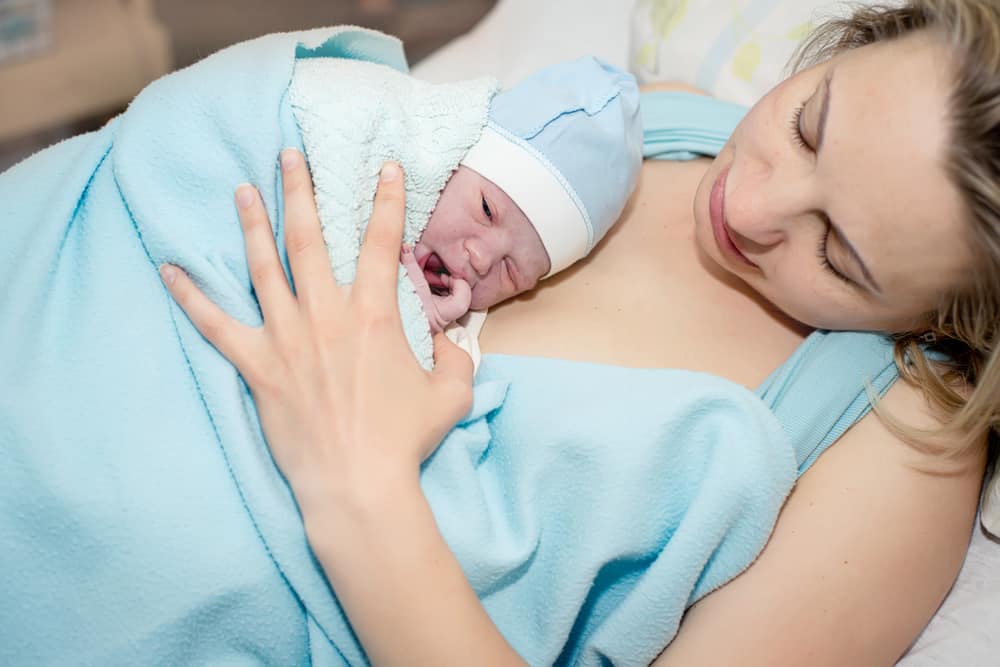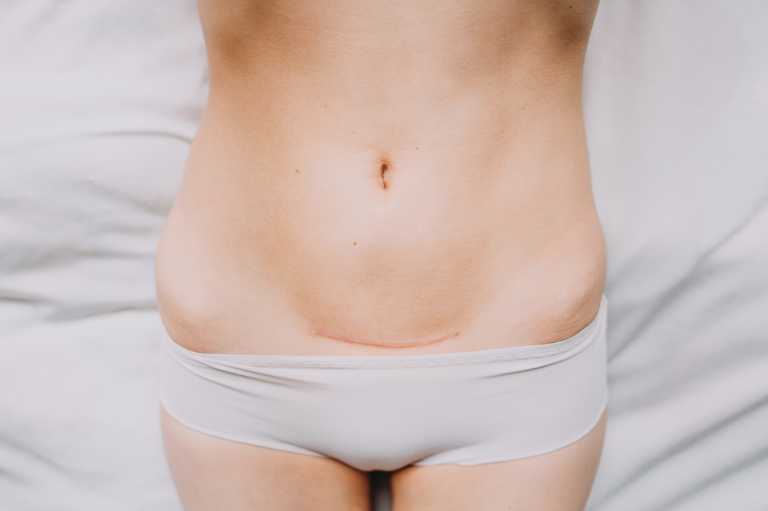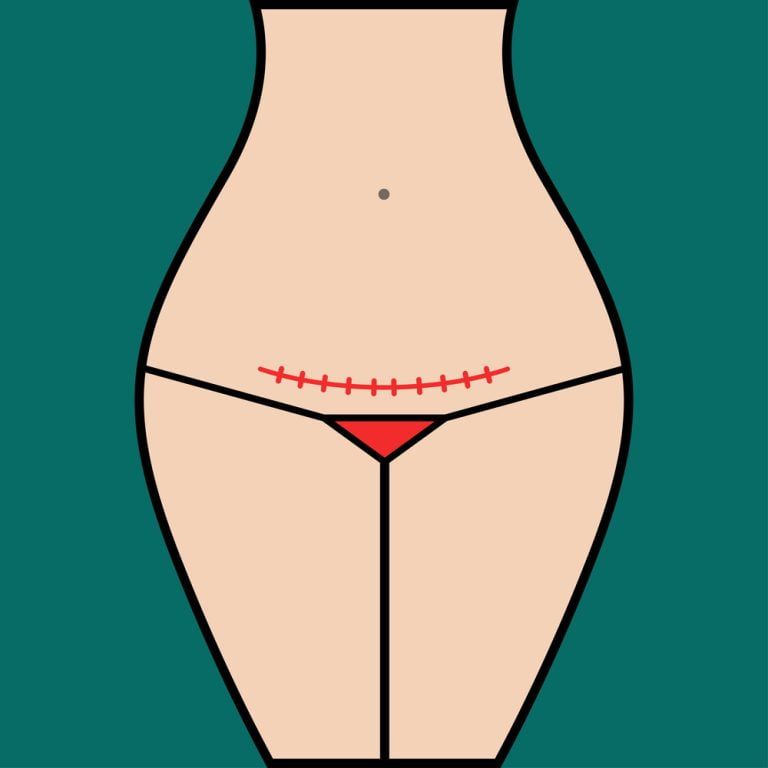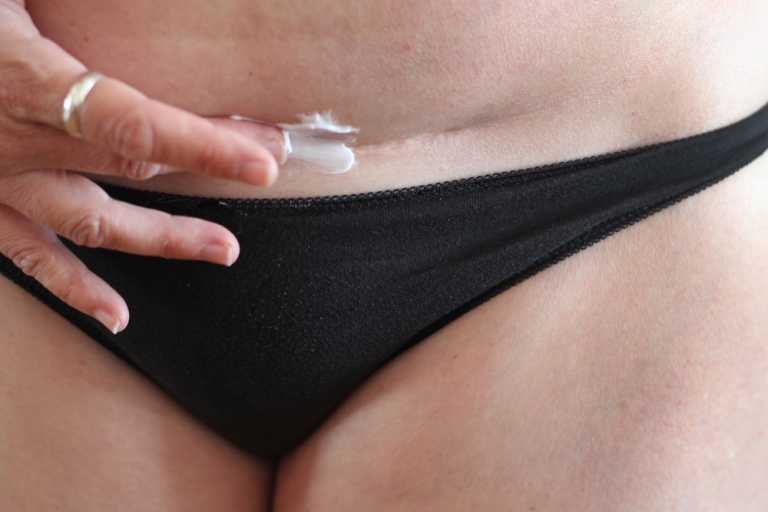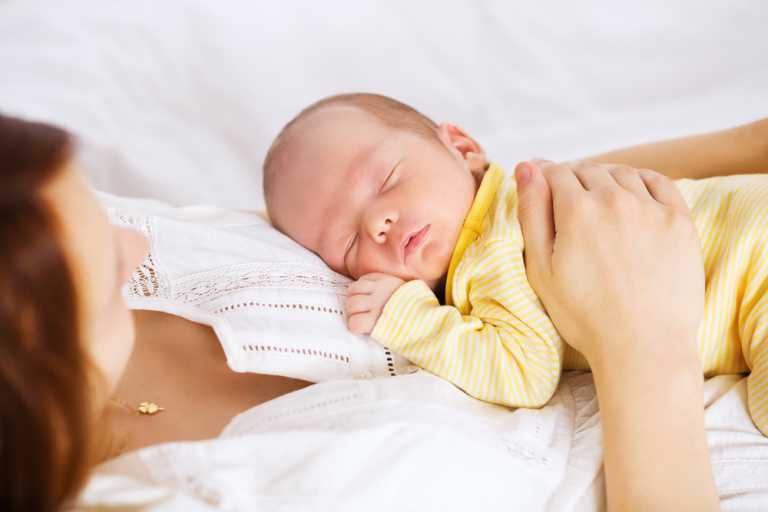The first few weeks post-c-section have the potential to be some of the most uncomfortable of your life. But with a little planning and a bit of shopping, they don’t have to be.
Whether you’re dealing with a sweaty Summer or a chilly Winter, there’s an outfit that’ll keep you comfy and healing well. Of course, there are also some pesky scar-irritating garments to avoid.
Here’s everything you need to know about what to wear after a c-section, including when to dig out your old jeans or heels.
What to Wear After a C-Section in the Summer
The two most important priorities in c-section scar healing are minimizing wetness and irritation. This can pose a challenge in the summer, as hot temperatures can lead to sweating. To avoid this, we recommend wearing:
Maxi Dress
A flowy maxi dress in breathable material is the ultimate outfit for a cesarean recovery. Whether you have a vertical or horizontal incision, it won’t put pressure on your scar and will prevent it from getting sweaty and damp.
If you’re breastfeeding, consider a style with a stretchy top or crossover design. This will allow you to nurse without lifting the whole dress!
Maternity or Nursing Dress
Many dresses designed for the last trimester are also fabulous for c-section recovery. This is because the extra room for your bump turns into breathing room for your scar.
Most maternity dresses are also designed with breastfeeding in mind. So many have built-in access for nursing.
Athletic Shorts and a Tank Top
If dresses aren’t your style, soft, cotton athletic shorts are another option. Just make sure the waistband doesn’t sit on your C-section incision. This can cause irritation and, potentially, an infection.
Pair the shorts with a tank top to keep cool. There are also plenty of nursing tanks on the market to ensure maximum comfort if you choose to breastfeed. T-shirts are great, but you will have to lift them all the way up to nurse.
Maternity or Nursing Nightgown
A maternity or nursing nightgown is another garment that will carry you from the third trimester, through your hospital stay, and well into c-section recovery. Again, the extra room around your tummy will help keep your incision site cool and dry.
Many c-section mamas find that their maternity sleepwear is the only thing they want to wear postpartum. So don’t feel bad if your nightwear suddenly becomes daywear.
Stretchy Jumpsuit
By far, the most on-trend postpartum outfit choice is the stretchy jumpsuit. The baggy style will take the pressure off your abdomen, and they adapt to your size as your body changes postpartum.
Most styles are also suitable for breastfeeding, provided you wear something accessible underneath, like a nursing tank.
What to Wear After a C-Section in the Winter
Winter weather means that you usually have to keep your scar covered for warmth. Unfortunately, this poses the challenge of waistbands and scar irritation. But don’t fret. We’ve found the ideal c-section attire to keep you comfy and healing well:
High-Waisted Cotton Leggings
Stretchy leggings are one of the most comfortable ways to keep warm post-c-section. But there are two key things to consider.
Firstly, ensure you choose a pair made mostly of cotton. Some elastane will be required for stretch. But the higher the cotton content, the less sweaty they’ll be. Your yoga pants may be comfy, but if they don’t let your scar breathe, it won’t heal well.
Secondly, choose a high-waisted style where the waistband falls well above your incision. This will prevent irritation and provide some belly support. You may find that maternity leggings fit you best for a while.
High-Waisted Fleece-Lined Joggers
High-waisted joggers or sweatpants are a great alternative to leggings if you prefer something less skin-tight. They also have the bonus of being warmer, particularly if you pick a style with a fleece lining.
However, selecting a pair that doesn’t irritate your incision is essential. It’s also a good idea to size up. A comfy, oversized pair will be better for your recovery than one that’s a little tight.
Tops
If you are breastfeeding, nursing clothes and nursing bras are nearly always c-section-friendly. However, you don’t have to spend lots on a new wardrobe. A regular stretchy tank with a nursing bra is fine for access, and you can layer it with a button-up shirt or cardigan for warmth.
In fact, even if you aren’t breastfeeding, items that open at the front will still be handy. Your little one will love the skin-to-skin contact of sleeping on your chest. Plus, it can get pretty toasty under a sleeping baby and their blanket, so layers will help you keep cool.
Stretchy PJs
While wearing clothes with a high cotton content is a good idea, a little stretch will be more comfortable. So, when selecting your new mom pajamas, feel the fabric. Soft, stretchy, and high-waisted are what you’re looking for.
If the material has no give, you may find it uncomfortable and prone to digging into your stomach.
A Cozy Robe
Having a warm robe to throw on for night feeds and diaper changes is invaluable for Winter moms. It’s also a great addition to any hospital bag, as you can wear it over your hospital gown when you’re up and about.
Key things to consider when choosing a gown are:
- Thickness
How warm do you need it to be? If it’s snowing, you may need something thick and fluffy. But if your house is well-heated, a stretchy jersey may be more comfortable.
- Color
New babies are messy. Diaper changes, spit up—need we say more? So, choose a heavily patterned style or one in a dark color. It’s less likely to show stains.
- Pockets
Carrying a baby is a two-handed job. So what do you do with your phone, water bottle, snacks, etc.? Put them in the big, handy pockets of your new robe, of course!
C-section Underwear
So, that’s your postpartum outfits sorted. But what should you wear underneath?
High-Waisted Cotton Panties
Those disposable paper undies from the hospital are great for a day or so. But they’re not exactly comfy or glamorous!
Instead, treat yourself to some high-waisted cotton panties. As you’ve gathered by now, the high waistband protects the scar, and the cotton prevents sweating. A wide gusset is also essential for holding maternity pads.
It’s a good idea to choose black or dark colors. Even after a c-section, you will still experience postpartum bleeding (lochia) and won’t want to ruin your new underwear with blood stains!
If you can’t find any comfy styles, head back to the maternity section. We know it may feel like going backwards, but that extra room will be heaven for your scar.
Control Wear
Some women find their stomachs feeling a little wobbly and unsupported after giving birth. If this affects you, you may want to slip on postpartum shapewear for some gentle compression. This could be as simple as the belly band you wore during pregnancy or a full abdominal belt.
A good girdle, belly wrap, or belly binder can also improve your posture and relieve back pain. However, not all compression garments are c-section-friendly. Check out our guide for more information, and ask your doctor if you’re having any doubts.
Baby Wearing After C-section
This may surprise you, but it’s OK to wear your baby after a c-section. You may even find it more comfortable than carrying your little one in your arms.
The best options are ring slings, stretchy wraps, and woven wraps, as they won’t sit near your scar. Save more substantial, structured baby carriers for 6 weeks postpartum or when your scar has healed.
What Not to Wear After a C-Section
Now that you know the garments to stock up on, here’s what you need to avoid:
Low Rise Waistbands
Avoid anything that could rub on your scar. At best, it’ll be uncomfortable. At worst, it could cause an infection and lead to more surgery.
Non-breathable Fabrics
Sweat is the enemy of good wound healing, so keep your clothing as breathable as possible and check out these ways to keep your incision dry.
White
Unless you are very brave, avoid white and light colors. Lochia, spit-up, and baby poop are all dangers postpartum, and they can strike without warning! Of course, if you want to wear white for a few gorgeous newborn photos, that’s no problem. But bring a backup outfit.
Jeans
While you may be excited to get back into your pre-pregnancy jeans, it’s best to wait 6 weeks after delivery or until your incision has healed.
The thick fabric, zip, and button can irritate your scar and cause more problems than they’re worth. If you’re desperate for denim, slip on some maternity jeans with a stretchy belly band.
Anything With Fastenings at the Waist
Zippers, velcro, buttons, buckles, and snaps all have the potential to damage your stitches. So make sure any garments, belly bands, and bottoms are smooth at the front.
Heels
If you’ve got an event coming up, you may be tempted back into your favorite high heels. However, they can put pressure on your scar and cause it to stretch. So, keep them in the closet for at least 6 weeks and stick to sneakers in the meantime.
Your feet will widen during pregnancy. Sometimes, this is due to swelling, but in other cases, it’s permanent. So, if you are eagerly counting down the 6 weeks, try them on first. You may need to shop for some new pairs.
Anything Uncomfortable
The key takeaway is to listen to your body. If anything feels tight or causes pain, take it off. You need good circulation to help the healing process and comfort to help you recover.
This advice is especially important for belly binders and girdles. These are garments designed to provide support and relieve pain. They won’t help you lose weight or shrink your waist. So if it’s not making you feel better, there’s nothing to lose by not wearing it.
